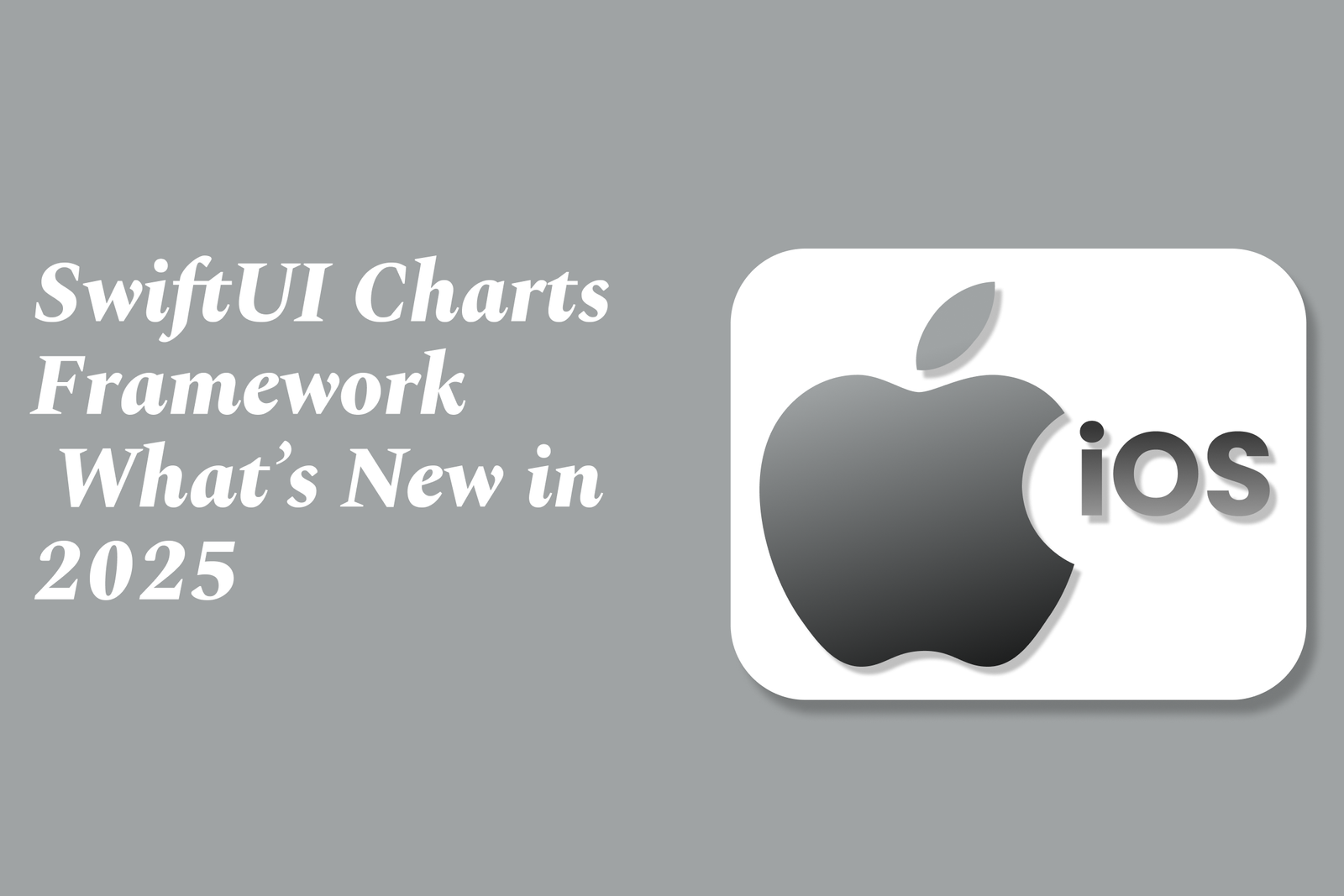SwiftUI Charts Framework: What?S New In 2025
The SwiftUI Charts Framework in 2025 introduces dynamic, glass-like visuals with enhanced interactivity, new chart styles, improved animation support, and seamless integration with SwiftUI’s Liquid Glass design system—elevating data visualization for Apple platforms.
SwiftUI Charts Framework: What’s New in 2025
1 ) Introduction to SwiftUI's 2025 Update
Apple's 2025 update introduces a sweeping redesign called Liquid Glass, which enhances the visual and interactive experience across apps built with SwiftUI. The framework now supports a glassy, rounded, and transparent aesthetic with minimal code changes required when using Xcode 26.
2 ) Liquid Glass Design System
Combines optical qualities of real glass with fluid, dynamic behavior.
Features real time rendering with specular highlights and light bending.
Controls adapt contextually by morphing and reshaping as users navigate.
Intelligent color adaptation adjusts based on content and ambient lighting.
Responsive lensing at edges introduces depth and visual separation while maintaining transparency.
3 ) Navigation and Tab Enhancements
Though navigation stacks API remains unchanged, TabView receives new APIs aligning with the Liquid Glass design, improving user experience.
The new Tab API supports roles, such as `.search`, allowing special placement like positioning the search tab at the screen's bottom separately from other tabs.
Developers are encouraged to refactor older TabView implementations to leverage these enhancements fully.
4 ) Toolbars and Buttons Revamped
Toolbars are now glassy by default and often split into groups, greatly supported by the new `ToolbarSpacer` type for spacing within toolbars.
Introduction of `GlassButtonStyle` allows buttons to adopt the new glassy look via `.buttonStyle(.glass)`.
A `glassEffect()` view modifier is available to apply glassy effects to custom views effortlessly.
5 ) Rich Text and Web Support Expansion
SwiftUI now supports attributed strings within the `TextEditor` view, enabling rich text editing capabilities previously unavailable.
WebView integration has been introduced, allowing embedding and displaying web content directly within SwiftUI apps.
6 ) VisionOS and 3D SwiftUI Views
New SwiftUI APIs facilitate embedding widgets into visionOS and CarPlay environments, supporting spatial layouts, animations, and state management for 3D apps.
Enhanced interoperability between SwiftUI and RealityKit allows seamless blending of UI and 3D graphics to create immersive experiences.
7 ) Developer Tools and Simulators Upgraded
Xcode Simulators receive improvements such as design comparisons, showing rulers/grid, quick build actions, and recording capabilities with touch and audio for easy sharing.
Bezel support for screenshots and videos enhances presentation and demonstration of app designs.
Summary:
The 2025 SwiftUI release brings a transformative redesign with Liquid Glass, modernizing the UI across Apple platforms with transparent, dynamic visuals and improved interaction models. Navigation, tabs, toolbars, and buttons adapt to this new style while enhanced APIs empower developers to build immersive 3D experiences on visionOS and beyond. Added support for rich text editing and web content integration further enrich app capabilities, making this update a significant evolution in the SwiftUI framework.
https://justacademy.in/news-detail/android-data-privacy-changes-in-2025
https://justacademy.in/news-detail/flutter-vs-maui:-desktop-race-heats-up
https://justacademy.in/news-detail/how-ios-19-improves-app-privacy-controls
https://justacademy.in/news-detail/flutter-theme-extensions-in-latest-version
https://justacademy.in/news-detail/flutter-native-compilation-for-web
Related Posts
In 2025, top Angular libraries offer modern, feature-rich components and tools for building dynamic web apps. From powerful data grids to low-code platforms like UI Bakery, these libraries enhance development speed, UI design, and scalability, making them essential for Angular developers.
Migrating from AngularJS to Angular 17 involves gradually upgrading your app by running both frameworks together using tools like ngUpgrade, rewriting components in TypeScript, and adopting Angular’s modern architecture to enhance performance, maintainability, and long-term support.
Angular state management tools help organize and handle app data efficiently, improving scalability and maintainability. Popular options include NgRx for robust, RxJS-based patterns, and newer Signal Store solutions that offer simpler, reactive approaches integrated tightly with Angular’s latest features.
RxJS in Angular empowers developers to manage asynchronous data streams with powerful operators like `forkJoin`, `combineLatest`, and `zip`. Mastering these key operators in 2025 is essential for building efficient, reactive applications that handle complex event sequences seamlessly.
Angular performance optimization in 2025 focuses on improving app speed and responsiveness by using techniques like OnPush change detection, lazy loading, efficient data caching, and AOT compilation. These practices reduce load times, enhance user experience, and ensure scalable, fast Angular applications.
In 2025, Angular remains preferred for large-scale, enterprise apps with its robust, all-in-one framework, while Vue attracts developers seeking simplicity and fast development for smaller projects. Both frameworks excel, with choice driven by project needs and team expertise.
Angular Signals are a new reactive primitive in Angular 16 that enable fine-grained, efficient change detection by automatically tracking dependencies and updating only affected parts of the UI. They simplify state management and boost app performance, revolutionizing Angular's reactivity model.
Angular interview questions to prepare in 2025 focus on core concepts like components, directives, data binding, routing, and dependency injection, along with TypeScript mastery and latest Angular features to ensure strong practical knowledge for building scalable, efficient web applications.
AngularJS reached its official end of support in January 2022, meaning no further updates or security patches. To ensure app security and performance, developers should consider migrating to modern Angular versions or seek third-party long-term support options if immediate migration isn’t possible.
The Angular Roadmap 2025 highlights upcoming features focused on improving developer experience and performance, including zoneless Angular, Signals integration, enhanced Forms, async data handling, improved HMR, and expanded Angular Material/CDK enhancements, driving modern, efficient web app development.










